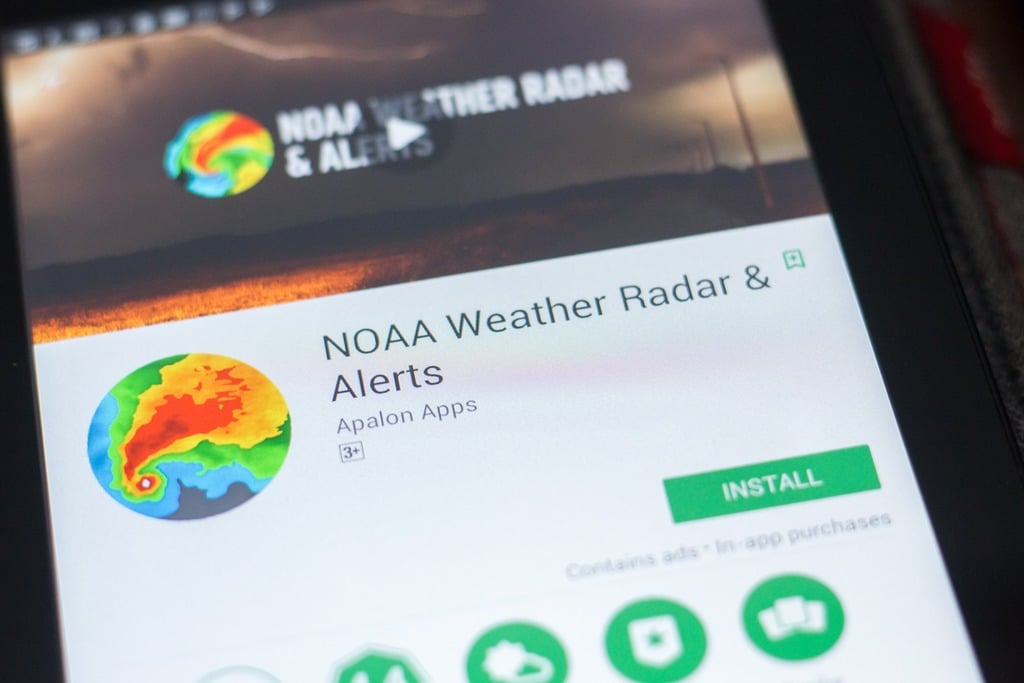In my family, we have an affectionate term for Northeast Florida’s afternoon summer thunderstorms: “sunshine storms”. We find it perfectly captures the essence of the unique weather we experience in this part of the Sunshine State. If you’re planning a move here, you might be curious about these phenomena. I’m here to shed some light (and a little bit of rain) on what to expect, particularly during our summer months.
Tropical Climate: A Sun-Lover’s Paradise
The first thing to know about Northeast Florida is its humid subtropical climate. This region experiences warm, humid summers and mild to cool winters. The average temperature in the summer hovers around the mid-80s to low 90s (°F), but it’s not uncommon for temperatures to spike even higher. The humidity can make these temperatures feel even hotter, so air conditioning is your friend. On the bright side, the region’s proximity to the ocean often results in a pleasant, cooling breeze – perfect for those hot summer days.
Understanding Florida’s ‘Sunshine Storms’

STORM CLOUDS ROLLING OUT TO SEA
While Florida is known as the Sunshine State, it’s also the wettest state in the U.S. The ‘sunshine storms’ typically begin in May and last through October, with the peak occurring in the summer months. These rains are often predictable, occurring in the afternoon and ending as quickly as they started. It’s a unique aspect of Florida weather that many newcomers find intriguing.
During this time, we see a lot of thunderstorms, which can be quite intense with heavy rainfall, lightning, and occasionally hail. However, they are usually short-lived, and the sun often comes back out afterward. It’s a natural cycle that brings life to our lush landscapes and cools down the hot summer temperatures.
The Role of Sea Breezes in ‘Sunshine Storms’

JAX BEACH, FLORIDA EXAMPLE OF COMMON AFTERNOON SHOWERS
An interesting phenomenon to note about these ‘sunshine storms’ is the role of sea breezes. Northeast Florida’s coastal location plays a significant role in its weather patterns. The land heats up faster than the ocean, creating a pressure difference that drives the sea breeze inland. This meeting of hot air from the land and cooler air from the ocean often results in thunderstorms – thus our regular afternoon ‘sunshine storms’.
One fascinating aspect of these storms is their localized nature. It can be raining in your front yard while the sun is shining in your backyard! This quirk is part of what makes living here an adventure.
After the ‘Sunshine Storms’: Enjoying Florida’s Evenings

LOOK FORWARD TO SUNSETS LIKE THIS AFTER RAIN STORMS IN THE SUMMER
One of the benefits of the afternoon ‘sunshine storms’ is the delightful cool-down it brings. After the shower passes, temperatures drop and the air becomes fresh and crisp. This makes evenings in Northeast Florida particularly enjoyable. Whether you’re sitting on a porch enjoying the sounds of nature, taking a walk along the beach, or heading out for a dinner under the stars, the post-rain atmosphere is truly enchanting.
Preparing for Florida’s ‘Sunshine Storms’
Adjusting to Florida’s unique climate might take a bit of time, but with some preparation, you can comfortably navigate the local ‘sunshine storms’.
Sun Protection: The sun in Florida can be strong, so protection is a must. Choose a broad-spectrum sunscreen with a high SPF and make it part of your daily routine. Hats, sunglasses, and loose, breathable clothing can also provide much-needed protection from the sun’s intense rays. It’s important to note that the UV Index is typically highest between 10 a.m. and 4 p.m., so try to limit your direct sun exposure during these hours when possible. Even on cloudy or cooler days, UV rays can still cause sunburn, so don’t skip the sunscreen!
Stay Hydrated: High temperatures and humidity can lead to quick dehydration. Always have a bottle of water with you, especially when engaging in outdoor activities.
Umbrella and Rain Gear: Those afternoon showers can sometimes catch you by surprise. It’s a good idea to keep an umbrella in your car or bag. A lightweight rain jacket can also come in handy.
Air Conditioning: Make sureyour home and vehicle’s air conditioning are in good working order before the summer heat hits.
Timing Activities: Plan your outdoor activities for earlier in the morning or later in the evening to avoid the hottest part of the day and the typical afternoon showers.
Protect Your Home: Consider investing in window film or shades to block out heat, and ensure your home has proper insulation. This can help keep your home cool and reduce energy costs.
Bug Spray: With the summer rain come the mosquitoes. Keep some bug spray at hand when planning to spend time outdoors, especially in the evenings.
Stay Informed: Download a reliable weather app on your phone to keep track of daily forecasts and any severe weather alerts.

The weather in Florida is part of the adventure of living here. With a bit of preparation and some local know-how, you’ll soon find yourself acclimated and ready to enjoy all the beautiful moments our ‘sunshine storms’ have to offer.
Conclusion
Living in Northeast Florida means embracing both the sunshine and the ‘sunshine storms’. It’s part of the rhythm of life here- the warm, sunny mornings and the cool, rainy afternoons. It’s a balance that brings beauty, diversity, and a unique charm to our part of the state.
So, if you’re considering a move to Northeast Florida, come ready to enjoy our tropical summer weather, our afternoon ‘sunshine storms’, and the breathtaking beauty they bring. Welcome to the Sunshine State, where the weather is as dynamic and full of character as the people who call it home.


